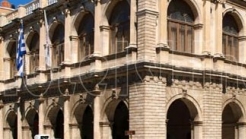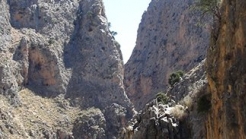

Greece
The house he lived in, where he wrote and died, after being destroyed by the WWII bombardments, was later restructured and still exists to this day. In Solomos’s house, the Company of Corfu Studies founded the Centre for Solomos Studies, which operates as “Solomos Museum”.
It is known that Greece’s national poet Dionysios Solomos lived most of his life, and until his death (1798-1857) in Corfu, where he wrote the biggest part, as well as the most significant one, of hiw writings, including «The Free Besieged » .
The house he lived in, where he wrote and died, after being destroyed by the WWII bombardments, was later restructured and still exists to this day. In Solomos’s house, the Company of Corfu Studies founded the Centre for Solomos Studies, which operates as “Solomos Museum”.
The poet’s desk and a small autograph of his are kept in the house. There is also exhibited photographic material, referring to the places, the people and the facts that are connected to the life, the works and the era of Solomos.
There is also a rich Solomos library, which is continuously enriched, and which contains all the old publicatios of the «Hymn to Freedom», as well as a series of portraits of the poet, and the members of the so-called Solomos School.


Loggia was the Club of Venetian and Cretan rulers of the Kingdom of Crete. Today it accommodates the Municipality of Heraklion. The building that is visible today it is build in the time of Francis Morosini in 1628. Winged lion of The Most Serene Republic of Adriatic is everywhere.


Continuing west of Anopolis on Sfakia, you will find Aradaina, a literally deserted village. A visit here to wander through the paths, the gardens and the half demolished stone houses which unfortunately the bridge couldn’t save from decay, is well worth it.


The Museum of ancient Eleutherna - Homer in Crete is the first archaeological site museum in Crete. The museum created to house the results of the excavations carried out for thirty years in the ancient city of Eleutherna. The originality of this museum is that the objects of the permanent exhibitio
1039 Ε 6061 01515 00